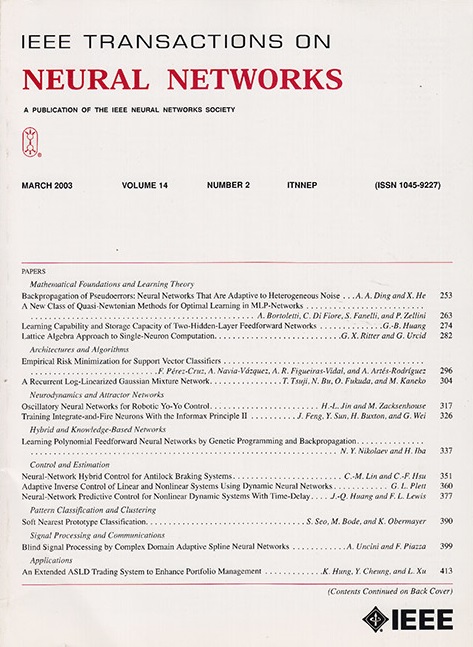DSE-Based Hardware Trojan Attack for Neural Network Accelerators on FPGAs
IF 8.9
1区 计算机科学
Q1 COMPUTER SCIENCE, ARTIFICIAL INTELLIGENCE
IEEE transactions on neural networks and learning systems
Pub Date : 2024-10-28
DOI:10.1109/TNNLS.2024.3482364
引用次数: 0
Abstract
Over the past few years, the emergence and development of design space exploration (DSE) have shortened the deployment cycle of deep neural networks (DNNs). As a result, with these open-sourced DSE, we can automatically compute the optimal configuration and generate the corresponding accelerator intellectual properties (IPs) from the pretrained neural network models and hardware constraints. However, to date, the security of DSE has received little attention. Therefore, we explore this issue from an adversarial perspective and propose an automated hardware Trojan (HT) generation framework embedded within DSE. The framework uses an evolutionary algorithm (EA) to analyze user-input data to automatically generate the attack code before placing it in the final output accelerator IPs. The proposed HT is sufficiently stealthy and suitable for both single and multifield-programmable gate array (FPGA) designs. It can also implement controlled accuracy degradation attacks and specified category attacks. We conducted experiments on LeNet, VGG-16, and YOLO, respectively, and found that for the LeNet model trained on the CIFAR-10 dataset, attacking only one kernel resulted in 97.3% of images being classified in the category specified by the adversary and reduced accuracy by 59.58%. Moreover, for the VGG-16 model trained on the ImageNet dataset, attacking eight kernels can cause up to 96.53% of the images to be classified into the category specified by the adversary and causes the model’s accuracy to decrease to 2.5%. Finally, for the YOLO model trained on the PASCAL VOC dataset, attacking with eight kernels can cause the model to identify the target as the specified category and cause slight perturbations to the bounding boxes. Compared to the un-compromised designs, the look-up tables (LUTs) overhead of the proposed HT design does not exceed 0.6%.基于 DSE 的 FPGA 神经网络加速器硬件木马攻击。
过去几年中,设计空间探索(DSE)的出现和发展缩短了深度神经网络(DNN)的部署周期。因此,利用这些开源的 DSE,我们可以自动计算最佳配置,并根据预训练的神经网络模型和硬件约束条件生成相应的加速器知识产权(IP)。然而,迄今为止,DSE 的安全性还很少受到关注。因此,我们从对抗的角度探讨了这一问题,并提出了一个嵌入 DSE 的自动硬件木马(HT)生成框架。该框架使用进化算法(EA)分析用户输入数据,自动生成攻击代码,然后将其放入最终输出的加速器 IP 中。所提出的 HT 具有足够的隐蔽性,适用于单场和多场可编程门阵列(FPGA)设计。它还能实现受控精度下降攻击和指定类别攻击。我们分别在 LeNet、VGG-16 和 YOLO 上进行了实验,发现对于在 CIFAR-10 数据集上训练的 LeNet 模型,只攻击一个内核会导致 97.3% 的图像被归入敌方指定的类别,准确率降低 59.58%。此外,对于在 ImageNet 数据集上训练的 VGG-16 模型,攻击 8 个内核可导致高达 96.53% 的图像被归入对手指定的类别,并使模型的准确率下降到 2.5%。最后,对于在 PASCAL VOC 数据集上训练的 YOLO 模型,使用八个内核进行攻击会导致模型将目标识别为指定类别,并对边界框造成轻微扰动。与未削弱的设计相比,拟议 HT 设计的查找表(LUT)开销不超过 0.6%。
本文章由计算机程序翻译,如有差异,请以英文原文为准。
求助全文
约1分钟内获得全文
求助全文
来源期刊

IEEE transactions on neural networks and learning systems
COMPUTER SCIENCE, ARTIFICIAL INTELLIGENCE-COMPUTER SCIENCE, HARDWARE & ARCHITECTURE
CiteScore
23.80
自引率
9.60%
发文量
2102
审稿时长
3-8 weeks
期刊介绍:
The focus of IEEE Transactions on Neural Networks and Learning Systems is to present scholarly articles discussing the theory, design, and applications of neural networks as well as other learning systems. The journal primarily highlights technical and scientific research in this domain.
 求助内容:
求助内容: 应助结果提醒方式:
应助结果提醒方式:


